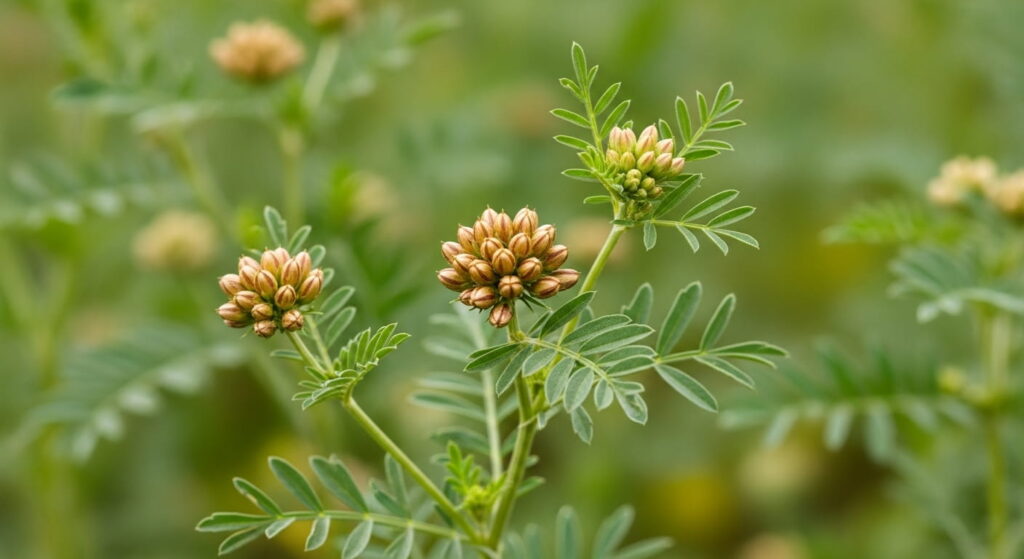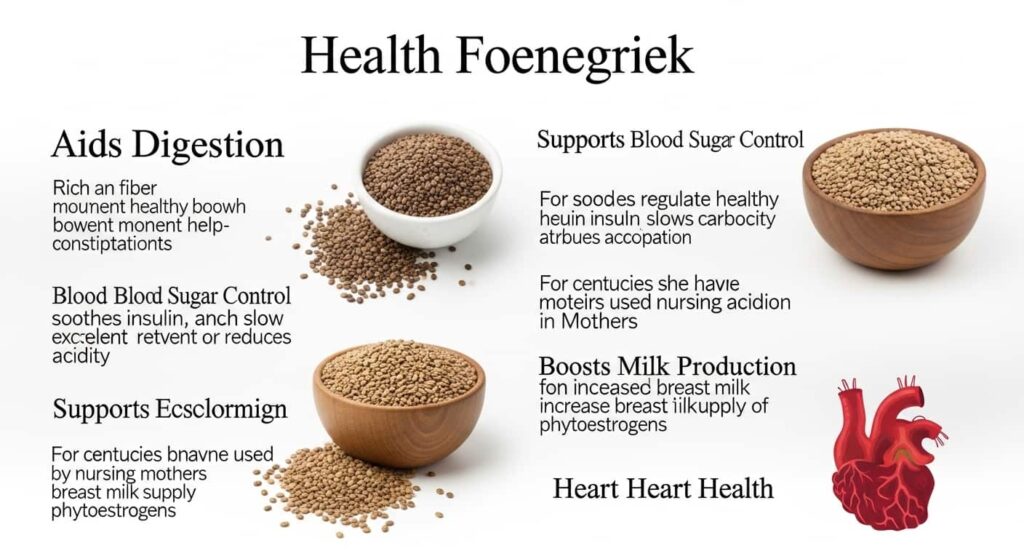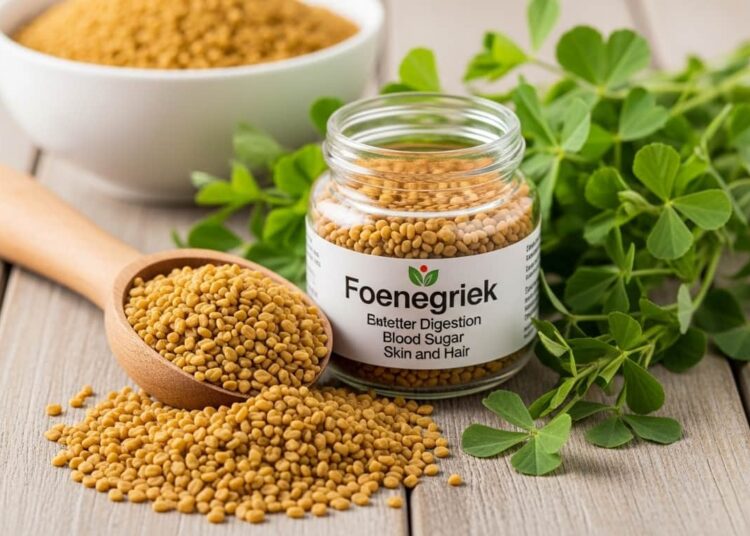Introduction
Foenegriek, also known as fenugreek, is a versatile herb that has been used for thousands of years in both traditional medicine and modern health practices. This ancient plant has gained global popularity for its incredible health benefits, culinary uses, and natural healing properties.
In recent years, foenegriek supplements, teas, and powders have become a wellness trend worldwide. People are turning to this humble herb for better digestion, hormonal balance, blood sugar control, and skin and hair health. Let’s explore why Foenegriek is considered one of nature’s most powerful ingredients.
What is Foenegriek?

Foenegriek (scientific name Trigonella foenum-graecum) is a medicinal plant belonging to the Fabaceae family, commonly known as the legume family. It is native to southern Europe, western Asia, and parts of Africa, but today it’s cultivated worldwide.
The plant is known for its small, golden-brown seeds that have a slightly bitter taste and a strong aroma. Both its seeds and leaves are used for culinary and medicinal purposes.
Botanical Description of Foenegriek
Foenegriek is an annual herb that grows up to 60 cm tall. It has light green leaves divided into three small leaflets, and pale yellow-white flowers that produce pods containing 10–20 small seeds each.
The seeds are the most valuable part of the plant. They are rich in nutrients, used in powders, teas, and extracts. The leaves, on the other hand, are eaten as vegetables in many cuisines.
The History of Foenegriek
The history of Foenegriek dates back to ancient Egypt and Greece. Archaeologists have found foenegriek seeds in Egyptian tombs, where they were used for embalming and healing.
In Ayurveda and Traditional Chinese Medicine (TCM), Foenegriek was prescribed for treating digestive problems, inflammation, and hormonal imbalances. Greek physicians used it to heal wounds and improve strength.
This rich history shows how deeply foenegriek has been rooted in human culture for thousands of years.
Different Names of Foenegriek Around the World
Foenegriek is known by many names across regions:
- English: Fenugreek
- Dutch: Foenegriek
- Hindi: Methi
- Arabic: Hulba
- French: Fenugrec
- Spanish: Fenogreco
Despite its many names, the herb remains the same — a symbol of natural wellness and healing.
Also read: Kashubka Annet
Nutritional Value of Foenegriek
Foenegriek is a nutrient-dense plant packed with essential vitamins and minerals.
- Macronutrients: Protein, fiber, and carbohydrates
- Micronutrients: Iron, magnesium, manganese, zinc, and calcium
- Vitamins: A, C, B6, and folate
- Bioactive compounds: Diosgenin, trigonelline, and saponins
These nutrients make foenegriek a powerhouse for health, supporting immunity, metabolism, and hormonal balance.
Chemical Composition of Foenegriek
The seeds contain powerful phytochemicals such as:
- Saponins: Help regulate cholesterol and hormones
- Alkaloids: Improve digestion and blood circulation
- Flavonoids: Provide antioxidant and anti-inflammatory benefits
Together, these compounds make Foenegriek a scientifically proven herb with therapeutic value.
Health Benefits of Foenegriek

Aids Digestion
Foenegriek is rich in fiber, which supports healthy bowel movements and helps prevent constipation. It soothes the stomach and reduces acidity naturally.
Supports Blood Sugar Control
Foenegriek helps regulate insulin levels and slows down carbohydrate absorption, making it an excellent natural remedy for diabetes management.
Boosts Milk Production in Mothers
For centuries, foenegriek seeds have been used by nursing mothers to increase breast milk supply naturally, due to the presence of phytoestrogens.
Improves Heart Health
It helps lower bad cholesterol (LDL) and triglycerides while increasing good cholesterol (HDL). Regular use can improve heart function and blood circulation.
Enhances Skin and Hair
Foenegriek’s antioxidants and vitamins improve skin tone, reduce acne, and strengthen hair roots, preventing dandruff and hair fall.
Foenegriek for Weight Management
Foenegriek helps in controlling appetite and reducing food cravings due to its fiber content. Drinking foenegriek seed water can increase satiety, helping with healthy weight loss when combined with a balanced diet.
Foenegriek and Women’s Health
Foenegriek is known for balancing female hormones and easing symptoms of menstrual cramps and menopause. It may also improve mood and energy levels during hormonal changes.
Foenegriek for Men’s Health
For men, foenegriek may help enhance testosterone levels, boost stamina, and improve vitality. Many natural supplements include foenegriek as a key ingredient for male reproductive health.
Traditional Uses of Foenegriek
In traditional medicine, foenegriek was used to:
- Heal wounds and inflammation
- Soothe sore throats
- Stimulate appetite
- Treat arthritis and respiratory issues
Its long-standing use in home remedies highlights its trusted healing potential.
Modern Applications of Foenegriek
Today, foenegriek is used in the pharmaceutical, food, and cosmetic industries. It’s added to hair oils, face masks, health supplements, and dietary powders due to its nutrient-rich properties.
Foenegriek in Alternative Medicine
In Ayurveda, foenegriek is known as a “heat-producing herb” used to balance body energies.
In Chinese medicine, it is used to boost kidney health and improve digestion.
Its holistic properties make it an essential part of natural healing systems worldwide.
Also read: Pulsecolon.com
Scientific Studies on Foenegriek
Modern research confirms that foenegriek can:
- Reduce fasting blood sugar and HbA1c levels in diabetic patients.
- Improve cholesterol and heart function.
- Increase milk production in lactating women.
- Enhance exercise performance and testosterone in men.
These findings validate what ancient cultures already knew — Foenegriek truly works.
Forms of Foenegriek Available in the Market
- Whole seeds – for cooking and soaking
- Powder – used in curries or smoothies
- Capsules/tablets – as dietary supplements
- Tea – soothing and cleansing beverage
- Oil – used for hair and skincare
How to Use Foenegriek
You can use foenegriek in many ways:
- Soak seeds overnight and drink the water in the morning
- Add powder to soups, curries, or smoothies
- Brew it as herbal tea
- Apply paste or oil to the scalp for hair growth
Recipes Using Foenegriek
Try these simple ideas:

- Foenegriek Tea: Boil seeds in water, strain, and drink warm.
- Methi Paratha: Mix dried leaves into wheat dough.
- Foenegriek Smoothie: Add a pinch of powder to yogurt and honey for energy.
Dosage Recommendations and Safety Tips
- Seeds: 1–2 teaspoons daily
- Capsules: 500–1000 mg per day
- Tea: 1 cup twice daily
Always start with small doses and consult a doctor before taking foenegriek supplements.
Possible Side Effects of Foenegriek
While generally safe, overuse may cause:
- Mild digestive issues (gas or bloating)
- Allergic reactions in sensitive individuals
- Interaction with diabetes medications
Interaction with Medications
Foenegriek may enhance the effect of diabetes or blood pressure drugs, so patients on medication should use it cautiously and under medical advice.
Foenegriek Supplements – What to Look For
When buying supplements, check for:
- 100% pure foenegriek extract
- No artificial fillers or preservatives
- Reputed brand certification
Tips for Buying and Storing Foenegriek
- Buy from trusted herbal or organic stores
- Choose aromatic, golden-brown seeds
- Avoid products with added chemicals or moisture
Also read:Nelonium
Storage and Shelf Life of Foenegriek Products
Keep seeds and powder in airtight containers in a cool, dry place. Properly stored foenegriek can last up to two years without losing potency.
Foenegriek in Daily Life
Add foenegriek to your meals, teas, or skincare to naturally boost health. Its regular use can lead to better digestion, improved energy, and stronger immunity.
Cultural Importance of Foenegriek
In many cultures, foenegriek symbolizes fertility, health, and protection. It is still used in traditional ceremonies and herbal rituals in South Asia and the Middle East.
Economic Importance of Foenegriek
Foenegriek farming supports rural economies across India, Egypt, and Ethiopia. The herb has a growing market value in the health and beauty industries.
Sustainability and Cultivation of Foenegriek
Foenegriek is an eco-friendly crop that requires little water and fertilizers, making it sustainable for organic farming.
Environmental Impact and Sustainable Harvesting
Responsible cultivation ensures biodiversity and soil fertility. Farmers are now adopting green harvesting techniques to protect the environment.
Myths and Facts About Foenegriek
Myth: Foenegriek is only for women.
Fact: It benefits both men and women equally.
Myth: It causes weight gain.
Fact: Foenegriek actually helps in weight management.
Future Potential
With growing interest in herbal wellness and natural nutrition, foenegriek is set to become a global superfood. Ongoing research continues to reveal its anti-inflammatory and metabolic benefits.
Conclusion:
Foenegriek is not just a spice — it’s a complete wellness solution. From aiding digestion and balancing hormones to nourishing skin and boosting immunity, it offers countless health benefits. Including foenegriek in your diet or supplement routine can help you lead a more natural and healthy lifestyle.
Frequently Asked Questions
1. What is Foenegriek used for?
It’s used to support digestion, balance hormones, control blood sugar, and improve hair and skin health.
2. Can Foenegriek help with weight loss?
Yes. It promotes fullness and reduces appetite, helping with natural weight management.
3. Is it safe for pregnant or breastfeeding women?
Breastfeeding mothers can use it to boost milk production, but pregnant women should consult a doctor first.
4. How much Foenegriek should I take daily?
1–2 teaspoons of seeds or 500–1000 mg of supplements per day is generally safe.
5. Can Foenegriek cause side effects?
Excessive intake may cause gas, diarrhea, or allergic reactions.
6. What are the best forms of Foenegriek to use?
Seeds, powder, and capsules are the most common and effective forms.
7. Does Foenegriek affect hormones?
Yes, it naturally balances estrogen and testosterone levels.
8. How long does it take to see results?
You may notice results in 2–4 weeks with consistent use.
9. Can men also use Foenegriek for health benefits?
Absolutely! It helps improve energy, muscle strength, and libido in men.
10. Where can I buy authentic Foenegriek products?
Purchase from trusted herbal stores or reputable online brands offering certified organic products.
Related post:
















